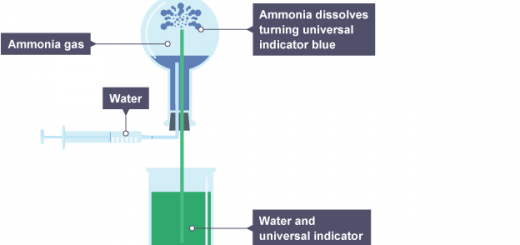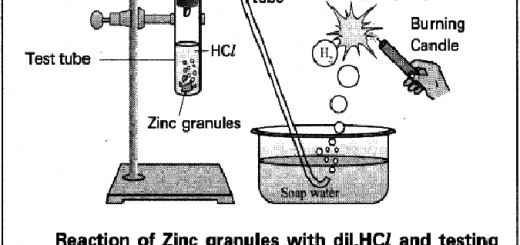Faraday’s laws of electrolysis (Faraday’s first laws & Second law), Quantity of electricity and equivalent weight
Faraday’s laws are used to calculate the quantity of electricity which flows in solution and quantity of material liberated at electrodes, Faraday deduced the relationship between the quantity of electricity which flows in a solution and the quantity of material liberated at electrodes, He summarized this relationship in two laws referred to his name.
Faraday’s first law
The quantity of material (gas or solid) formed or consumed at any electrode is directly proportional to the quantity of electricity that passes in the electrolytic (solution or molten), Or the amount of separated substance produced by passing an electric current is directly proportional to the quantity of electricity passing through the solution or molten, m ∝ Q, m is the amount of separated substance (ppt., evolved, dissolved), Q is the quantity of electricity.
Verify Faraday’s First law by passing different quantities of electricity in the same solution and calculating the ratio of masses of the formed materials at the cathode or dissolved from the anode and comparing these ratios of the passed quantities of electricity.
Experiment to verify Faraday’s first law
Pass different quantities of electricity in the same solution which can be calculated by: The quantity of electricity (C) = Intensity (A) × Time (s), Q = I × t, Q is the quantity of electricity and measured in coulomb, I is the intensity of the electric current and measured in ampere, t is the time and measured in second.
Record the mass formed at the cathode for each quantity of electricity, and compare between the masses formed at the cathode and quantities of electricity used.
Observation: Increasing the mass of substance at the cathode by increasing of quantity of electricity passed in solution, we find that m ∝ Q.
Conclusion: the quantity of material formed or consumed at any electrode is directly proportional to the quantity of electricity that passes in the electrolytic (solution or molten) which is called Faraday’s First law.
Faraday’s Second Law
The masses of the different materials formed or consumed by the same amount of electricity that passes in different electrolytes connected in series are proportional to their equivalent masses, Mass ∝ Equivalent weight.
(The mass of the first element / the mass of the second element) = (The equivalent mass of the first element / the equivalent mass of the second element)
The gram equivalent mass of the substance is the mass of the substance that can lose or gain one mole of electrons during the chemical reaction.
The gram equivalent mass= the gram atomic mass/number of charges on the element
Verify Faraday’s second law
Pass the same quantity of electricity in different groups of solutions (silver nitrate, copper (II) sulphate and aluminum chloride), Record the masses formed at the cathode, Compare between the ratio of masses of each cell and the ratio of their equivalent masses.
Observation: The masses of the formed materials at the cathode in the cells of aluminum, copper, silver, respectively are proportional to their equivalent masses.
The equality of electricity in Coulomb that passed equal the result of multiplication of current intensity that used (in ampere) by the time (in seconds) through which the current passed.
Quantity of electricity (Coulomb)= Current strength (ampere) × time (second)
Coulomb is the quantity of electricity produced when a current of 1 ampere passes through a conductor for one second, “ampere.second” or it is the quantity of electricity required to precipitate 1.118 milligrams of silver or 0.001118 gm silver.
Ampere: “unit of current intensity”, It is the current intensity which passes for one second in a solution of AgNO3 and precipitates 1.118 milligrams of silver.
The relation between the quantity of electricity and equivalent weight
Practically one coulomb will result in precipitating 0.001118 gram of silver from a solution of silver ions (monovalent).
On passing 1 C in AgNO3 solution → 0.001118 gram of Ag precipitation
On passing 1 F in AgNO3 solution → 107.88 gram of Ag gram equivalent mass precipitate.
So, 1 F = 96500 Coulomb, Faraday is the quantity of current required to deposit or dissolve the gram equivalent mass of any element, it equals 96500 C, Or Faraday is the amount of electricity needed to separate equivalent weight of any element.
The general law of electrolysis: when one Faraday ( 1 F ) (96500 C) passes through an electrolyte, this will lead to dissolution or evolution or deposition of gram equivalent mass of the substance of any electrode.
Equivalent mass in gram = Atomic mass /valence
Quantity of electricity = Current intensity × time
Mass (gram) = (Quantity of electricity (coulomb) × equivalent mass)/ 96500
Mass (gram) = Quantity of electricity (Faraday) × equivalent mass
The number of Faraday’s required to precipitate one gm atom of the metal is the number of charges (oxidation number).
Electrolytic cells structure & importance, the difference between Electrolytic cell & Galvanic cell



